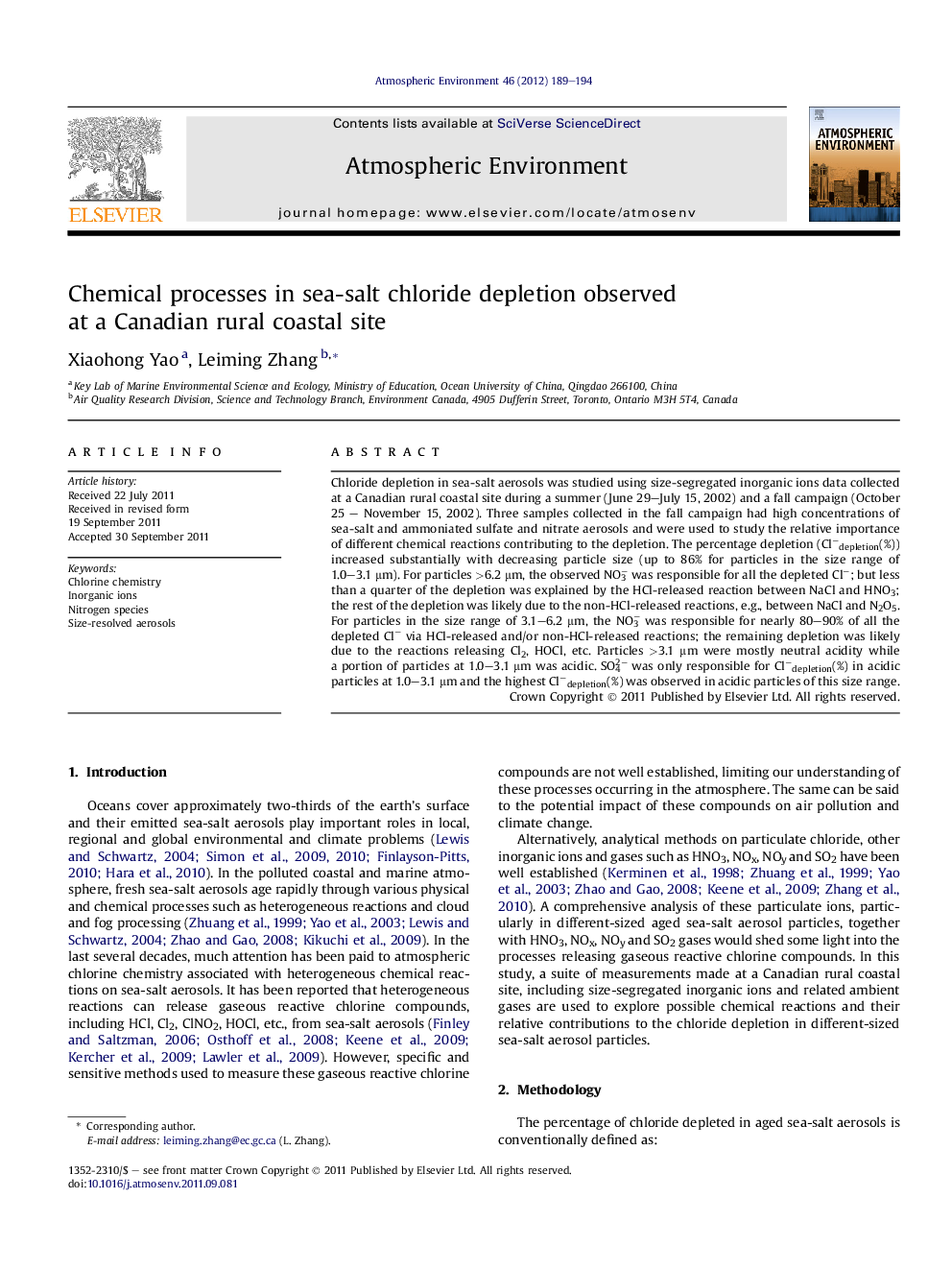| Article ID | Journal | Published Year | Pages | File Type |
|---|---|---|---|---|
| 4439253 | Atmospheric Environment | 2012 | 6 Pages |
Chloride depletion in sea-salt aerosols was studied using size-segregated inorganic ions data collected at a Canadian rural coastal site during a summer (June 29–July 15, 2002) and a fall campaign (October 25 – November 15, 2002). Three samples collected in the fall campaign had high concentrations of sea-salt and ammoniated sulfate and nitrate aerosols and were used to study the relative importance of different chemical reactions contributing to the depletion. The percentage depletion (Cl−depletion(%)) increased substantially with decreasing particle size (up to 86% for particles in the size range of 1.0–3.1 μm). For particles >6.2 μm, the observed NO3− was responsible for all the depleted Cl−; but less than a quarter of the depletion was explained by the HCl-released reaction between NaCl and HNO3; the rest of the depletion was likely due to the non-HCl-released reactions, e.g., between NaCl and N2O5. For particles in the size range of 3.1–6.2 μm, the NO3− was responsible for nearly 80–90% of all the depleted Cl− via HCl-released and/or non-HCl-released reactions; the remaining depletion was likely due to the reactions releasing Cl2, HOCl, etc. Particles >3.1 μm were mostly neutral acidity while a portion of particles at 1.0–3.1 μm was acidic. SO42− was only responsible for Cl−depletion(%) in acidic particles at 1.0–3.1 μm and the highest Cl−depletion(%) was observed in acidic particles of this size range.
► The percentage Cl− depletion increased with decreasing particle size. ► Non-HCl-released reactions played a role in Cl− depletion for particles >6.2 μm. ► Reactions releasing Cl2, HOCl also played a role for particles 3.1–6.2 μm. ► SO42− was only responsible for Cl− depletion in acidic particles at 1.0–3.1 μm.
